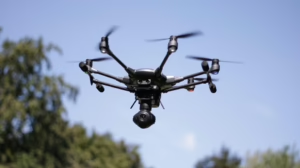Beyond Robotics: The True Meaning of Mechatronics in Everyday Life
Introduction
In an age where technology permeates every aspect of our lives, the term mechatronics often comes into play as a fascinating blend of mechanics, electronics, computer science, and control systems. Many people associate mechatronics primarily with robotics, but its true implications and applications reach far beyond the assembly lines of manufacturers or the realms of automated machines. This article delves into the intricate world of mechatronics, unraveling its significance in our everyday experiences and how it shapes the modern landscape of technology and innovation.
1. The Anatomy of Mechatronics
1.1 What is Mechatronics?
Mechatronics is an interdisciplinary field that integrates various engineering disciplines, including mechanical engineering, electrical engineering, computer science, and control systems. The core idea is to design and create intelligent systems and products that can automate tasks, enhance human capabilities, and improve efficiency. But what does this mean for the average person on the street?
1.2 The Components of Mechatronics
- Mechanical Systems: The backbone of any mechatronic system. From gears to levers, these elements provide the physical structure needed for movement and operation.
- Electronics: These components manage the signals and electrical flows that drive the mechanical parts. Circuit boards, sensors, and microcontrollers fall into this category.
- Computing: At the heart of modern mechatronic systems lies software. Algorithms and programs dictate how the hardware should respond and perform tasks.
- Control Systems: Essential for ensuring that systems operate smoothly. Control theories govern how sensors and actuators work together to achieve desired outcomes.
2. Everyday Applications of Mechatronics
2.1 Home Automation
One of the most tangible examples of mechatronics in daily life is home automation. Smart thermostats like the Nest Learning Thermostat or smart lighting systems such as Philips Hue utilize mechatronic principles to enhance home comfort and energy efficiency. These systems rely on sensors to detect occupancy and adjust temperature or lighting accordingly, providing both convenience and energy savings.
2.2 Automotive Technology
Modern vehicles are a testament to the advancements in mechatronics. From anti-lock braking systems (ABS) to lane-keeping assist technologies, the integration of mechatronic systems has drastically improved safety and driving comfort. The electronics within modern cars communicate with mechanical components to optimize performance in real-time.
2.3 Medical Devices
Mechatronics plays a crucial role in the medical field, particularly in devices like robotic surgical systems and prosthetics. For instance, the da Vinci Surgical System allows surgeons to perform minimally invasive surgeries with extreme precision through robotic arms. Additionally, advanced prosthetics incorporate sensors and motors to mimic natural limb movement, providing users with enhanced functionality and quality of life.
3. Mechatronics in Industry
3.1 Manufacturing Systems
In industrial settings, mechatronics drives innovation in manufacturing processes. Automation systems, including robotic arms on production lines, optimize efficiency and precision. Techniques like Just-In-Time (JIT) manufacturing rely on mechatronic systems to ensure products are made to order, preserving resources and minimizing waste.
3.2 Supply Chain Management
Mechatronic solutions extend into logistics and supply chain management. Automated guided vehicles (AGVs) navigate warehouses autonomously, transporting goods from one location to another with minimal human intervention. These advancements not only streamline operations but also reduce labor costs and potential errors.
4. Education and Skills in Mechatronics
4.1 Academic Programs
As the demand for mechatronics professionals grows, educational institutions are increasingly offering specialized programs. From bachelor’s degrees to online courses, students can gain valuable skills that combine mechanical and electrical engineering, programming, and systems integration.
4.2 Hands-On Experience
Projects that encourage hands-on experience are a significant aspect of mechatronics education. Competitions like robotics contests allow students to apply theoretical knowledge to real-world problems, fostering innovation and critical thinking. Workshops and maker spaces serve as practical environments to experiment and develop new mechatronic systems.
5. The Future of Mechatronics
5.1 Advanced Robotics
As we look to the future, the integration of AI with mechatronic systems promises a new era of intelligent robotics. Upcoming innovations may lead to more autonomous machines that can learn from their environments, adapt, and make decisions independently. These advancements could transform industries from logistics to healthcare.
5.2 Sustainable Technologies
The push for sustainability is influencing the development of mechatronic systems. Engineers are now focusing on creating energy-efficient devices and processes that minimize environmental impact. Innovations in renewable energy, such as smart grids and eco-friendly manufacturing systems, represent the future landscape of mechatronics.
6. Conclusion
Mechatronics is more than just a field of engineering; it is a crucial component of our everyday lives. Its principles are embedded in countless technologies that influence how we work, live, and interact with the world around us. As we venture further into the digital age, understanding and embracing mechatronics will be paramount for individuals and industries alike—a bridge to a more efficient and innovative future.
This is an outline and partial content for your article. You can expand each section with more examples, case studies, and technical explanations to reach the desired word count. If you want more specific information on any section, feel free to ask!

























Add Comment